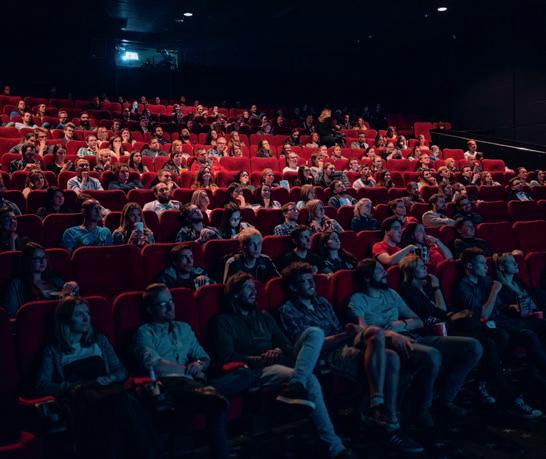
8 minute read
Movies Masters Paintings at The Royal Łazienki Museum – p. 64
MOVIE NIGHT
As per tradition, October brings with it the annual Warsaw Film Festival…
Starting out in 2000 in front of audiences that barely numbered a dozen foreign guests, the Warsaw Film Festival has since developed to become one of Poland’s best-known cultural festivals – something that was recognized globally when, in 2009, the WFF became one of 14 international film fests to be endorsed by the International Federation of Film Producers Association.
Showcasing the best of Polish, European and international cinema, the audience will also be offered the chance to get involved by voting for the best foreign film, and interaction is further encouraged by a series of meetings and seminars with those involved in the film industry. Divided into different categories, such as best screenplay, director, documentary, etc., overall winners will be chosen by a selected jury. This year, due to the war in Ukraine, eighteen films that would have been shown at the Odesa Film Festival will instead be shown in Warsaw.
Running from October 14th to October 23rd, screenings will this year take place in Kino Atlantic and Multikion Złote Tarasy. For a schedules and ticket info, see: wff.pl.
Ten Kinos To Watch!
The film festival aside, Warsaw has a cluster of cinemas that far exceed the sterile multiplexs you may otherwise be used to…
Amondo
Żurawia 20, kinoamondo.pl Having dodged bankruptcy after a celebrity-endorsed crowdfunding campaign over the summer, Amondo are back to doing what they do best – showing arthouse films inside the smallest screening room in Warsaw. Holding 20 and 25 people in two rooms, other bonuses go to a VHS rental service that allows people to watch cassettes on their own video player.
Iluzjon
Narbutta 50A, iluzjon.fn.org.pl Designed in Socialist Realist form and opened in 1956, it’s since been magically restored so as to evoke the yesteryear’s air. Featuring beautiful neon and a stunning rotunda, it’s famed not just for its architecture, but a repertoire slanted towards arthouse flicks and classics such as Singing In The Rain and Belle De Jour. After, make time to discuss what you’ve seen in their café-bar.

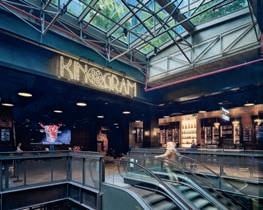
Kinogram
Żelazna 51/53 (Norblin), kinogram.pl Prices top out at PLN 55, but noone ever complains. Warsaw’s most luxurious cinema features a vintage style reminiscent of the golden era of Hollywood. Equipped with velvet sofas and plush armchairs – each with their own little table – screening rooms accommodate from 48 to 112 people. The cocktails served in the bar are A-Class, and the whole place is dog friendly as well. It’s one-of-a-kind.
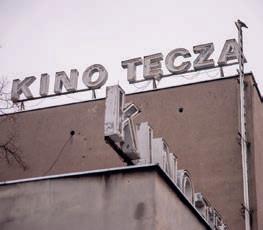
Kinoteka
Pl. Defilad 1, kinoteka.pl Although the program isn’t quite as maverick as some of its competitors, it remains far more exotic than Warsaw’s mainstream screening rooms – and who doesn’t like the idea of watching a film inside the Palace of Culture? Decorated with sturdy pillars, red carpets and brass fittings, the atmosphere is magical. And why not a drink beforehand? Do so in Charlie by the entrance, a cocktail bar that evokes the bar that Jack Torrance props up in The Shining.
Kultura
Krakowskie Przedmieście 21/23, kinokultura.pl With a name like that you already know what you’re getting – gorgeously appointed, the vibe is rounded out with a defiantly artistic program: most recently, that involved a review of Azerbaijani cinema. The adjoining Paradiso bar-restaurant is a spacious zone in which to convene both before and after.
Luna
Marszałkowska 28, kinoluna.pl Looking a bit grim from the outside, Luna is a Warsaw classic. Celebrating its 60th birthday in July, its name was inspired by the Soviet space program of the same title. Often hailed as Warsaw’s favorite cinema, the repertoire has a distinctly alternative bent. With Pl. Zbawiciela and Oleandrów close by, there’s no shortage of post-film gathering grounds either.
Muranów
Andersa 5, kinomuranow.pl Opened in 1951 on a plot that had originally been earmarked to serve as a carpark, Kino Muranów was Poland’s first two-screen cinema and quickly became the beating heart of the area’s cultural life. Designed in bombastic Socialist Realist style by Michał Ptic-Borkowski it has retained much of its original splendor whilst simultaneously thriving on a reputation for showcasing independent and often arty films.
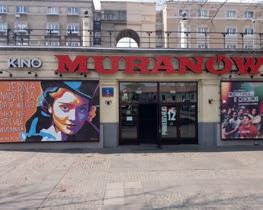
Stacja Falenica
Patriotów 44B, stacjafalenica.pl What a beauty. Found inside a pre-war train station building, this star features an outstanding café with original floor tiles, vintage posters, a healthy selection of books and a wacky ceiling mural. There is nothing ordinary about this place and that applies also to its film listings. And for kids, they also play their hand at hosting morning workshops and other educational activities.
x
Tęcza
Suzina 6, wck.info.pl Disclaimer: we’ve not been here since it resumed activity, so instead we can only go on what we’ve heard and read. Notable for its exterior mural of director Andrzej Wajda, this cultural center was launched anew over summer and aside from offering regular arty screenings also touts, allegedly, a huge film library. Random fact: the first shots of the 1944 Warsaw Uprising were fired practically right outside.
Warszawa
Karowa 20, dsh.waw.pl Though not a cinema in the strictest of senses, the History Meeting House contains a screening room that shows films twice daily relating to the city’s past. Included in that are films showing ‘Warsaw’s daily life in 1938’, unique amateur films from the inter-bellum, and ‘chronicles’ sourced from Polish Telegraphic Agency.
PRESENTING THE MASTERS
For followers of the finest, there is no other place to visit this autumn than the Royal Łazienki Museum…
Temporarily borrowed from the collection of the Dulwich Picture Gallery in London, visitors to the Royal Łazienki Museum have the chance to view five of some of the most outstanding works ever created by those who were at the forefront of the Dutch, Flemish and Italian artistic scenes.
Titled ‘Masterpieces for the King?’, the exhibition presents a selection of 17th and 18th century masterpieces that were once purchased by Noel Desenfans, a popular London art dealer, and subsequently advertised as being “acquired for His Majesty, the King of Poland”.
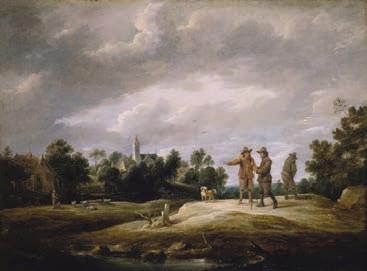
David Teniers the Younger (16101690), Talking villagers in front of the landscape with the church, ca. 1660-70, oil, canvas
Talking Peasants against a Landscape with a Church
David Teniers the Younger
Rated as one of the best Flemish painters of the 17th century, Teniers the Younger formerly served as the court painter and gallery curator of Archduke Leopold Wilhelm Habsburg. Peasant scenes were his specialty, and these included both tavern scenes and views of rural homesteads. This one serves to almost typify his output, showing as it does two villagers immersed in conversation whilst making vigorous gestures. Close by, and with his back turned, another seems to urinate while a dog stands about. Picturesque but not short on humor, the whole scene encapsulates the work of Teniers: light and fluid yet also painstakingly delicate.
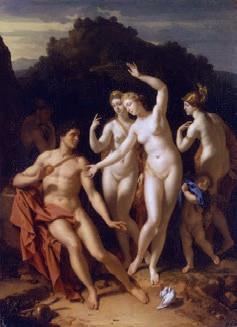
Adriaen van der Werff (16591722), The Judgement of Paris, 1716, oil, canvas on an oak board
The Judgement of Paris
Adriaen van der Werff
With his smooth, enamel-like textures and precise attention to detail, van der Werff is rightfully remembered as one of the best representatives of his genre. A joy to behold, this painting depicts the slender, dancing bodies of Juno, Minerva and Venus as they dance before Paris, who sits clasping the golden apple that he will award to the most beautiful of the trio. Known to come from the collection of the Duke of Orleans, historians also have knowledge that the painting came into the hands of Desenfans in 1796 – one year after Stanislaus Augustus abdicated.
Royal Łazienki Museum
ul. Agrykola 1, lazienki-krolewskie.pl
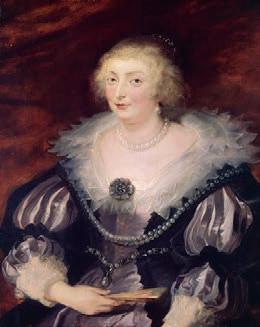
Peter Paul Rubens (1577-1640), Portrait of a Lady, ca.1625, oil, oak plank
Portrait of a Lady
Peter Paul Rubens
The work of one of the most prominent artists of the Baroque era, it’s unknown who Rubens based this portrait on, though some researchers have speculated the subject to be Duchess Catherine Manners, the wife of George Villiers, a.k.a. the Duke of Buckingham. Acquired on behalf of King Stanislaus Augustus, it was one of four paintings belonging to the King that are known to have been purportedly painted by Rubens. Superbly rendered, the picture has been widely lauded for its delicate brushstrokes despite remaining partially unfinished.
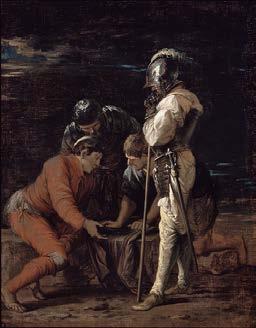
Salvator Rosa (1615-1673), Soldiers Playing Dice, ca. 1656-58, oil on canvas
Soldiers Playing Dice
Salvatore Rosa
Associated with scenes showing hermits, vagabonds and soldiers depicted against wild and romantic landscapes, Rosa’s original style remains characterized by its expressive, textural techniques – and almost twitchy, nervous brushstrokes. This painting is considered one of the finest in his oeuvre, and also quite unique – the soldiers do not complement the landscape, but instead are the very subject. Though it is unknown if this painting ever reached the collection of the Polish King, it would have for certain stood out seeing that the King’s gallery reputedly lacked Italian works of particularly high quality.
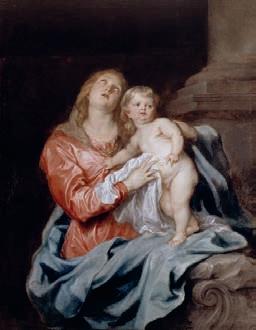
Anthony van Dyck (1599-1641), Madonna and Child, ca. 1630-32, oil on canvas
Madonna and Child
Anthony van Dyck
Previously working in Antwerp, Genoa, Florence and Rome, and then later in London under the patronage of King Charles I, van Dyck is celebrated for his sophisticated court portraits as well as historical paintings. Shrouded in in richly draped folds of silk fabric, this work presents the Madonna, her eyes raised to the heavens whilst the baby Jesus stands on her lap. Regarded as one of the artist’s most famous religious compositions, it’s since been widely reproduced. As to its previous owners, these are though to include the Paris-based collector Madame de Julienne and the art trader Jean Baptiste Lebrun.


